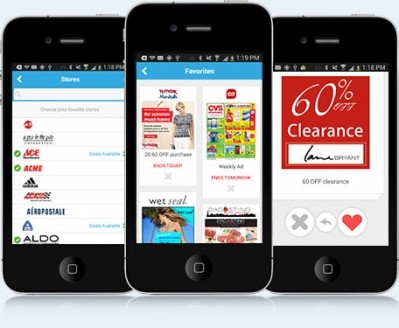Digital pioneers now, CPG market leaders tomorrow: GMA

As consumers enjoy the convenience and value of digital in other aspects of their lives, they’re increasingly expecting in it grocery. CPG is reaching a tipping point, as digital’s current 1% penetration appears poised to expand to 5% and could reach as much as 10%, according to the report, titled The Digital Future: A Game Plan for Consumer Packaged Goods.
The 5% e-commerce penetration represents nearly half of total CPG growth during the next five years (and more than $35 billion in annual sales), meaning companies without an effective digital capability risk “stagnation, loss of share, and even shrinking sales”. Early movers, on the other hand, have the opportunity to establish leading positions that will be difficult for others to infiltrate.
“The CPG industry is fast approaching a tipping point, driven by a confluence of trends,” said Patrick Hadlock, a partner at The Boston Consulting Group and a co-author of the report. “Consumers are embracing technologies, devices, and services that make everyday tasks such as shopping, cooking, and even commuting quicker, easier, more fun, and more efficient. This is fragmenting the purchasing pathway as consumers regularly switch back and forth between digital and physical channels, and they interact digitally both in and outside of stores.”
Digital shopping already upended purchasing pathway; what’s next?
A far cry from the days of browsing through cookbooks and making a shopping list, many consumers now get daily menu suggestions on their computers, tablets or phones and then can order the ingredients online, have them delivered or pick them up, already packed. Technological innovations will drive much of the growth in CPG (and continue to reshape consumer habits) going forward, according to the report.
Online consumers already use a range of platforms, websites and mobile apps to improve their lives—from search engines and social media sites to mobile “gatekeepers,” “curated commerce,” “daily deal,” and “superutility” sites and apps. Many are heavy users of supplier- and retailer-sponsored websites, and they increasingly expect manufacturers to have great content online.
As habits change, digital shopping has quickly evolved into a complex ecosystem that has fundamentally reshaped—and continues to redefine—the way consumers engage with brands and buy products, according to the report. Digital has already uprooted the traditional purchasing pathway so it is much more fragmented and dynamic, owing largely to consumers’ ability to share their experiences and knowledge. At every stage—discover, search, locate, buy and post-purchase—they can switch back and forth between digital and physical shopping channels, interact digitally in and outside of stores, and use numerous channels over which the retailer has no control. These varied shopping channels open up thousands of potential new purchasing pathways, more than five times the number available in the brick-and-mortar world, according to the report.
Digital impact strongest early in purchase pathway
The Digital Future shows that the impact of digital is felt most acutely at the early stages of the purchasing pathway. Almost 40% of offline shoppers and more than 30% of online shoppers said that technology's impact is greatest during the discovery phase. More than a quarter of both offline and online shoppers said that technology’s biggest impact is in the search phase. Moreover, almost a quarter of in-store shoppers reported online activity as one of the three most influential factors on their purchasing pathway.
Digital channels currently have the greatest influence on purchases of home care and general food products but are likely to expand in importance during the next five years as innovation models (think crowdsourcing and shared economy platforms) will likely tackle the barriers to online purchasing for grocery, such as delivery costs and the ability to check for freshness.
Traditional retailers face a massive wave of new competitors and competitive models. Large technology companies with deep pockets are building disruptive digital grocery businesses to serve this category and support broader strategic goals. Start-ups are using value-added services to take share and build defensible niche positions, often by combining new product offerings with digital channels.
CPG manufacturers will need to participate in multiple retail models; the winning models have yet to be established, and it is likely that numerous models will prevail, according to the report.
But that also means that companies will have to develop a coherent way to handle assortment, pricing, trade rules, content and support for each channel ... and prepare for channel conflict. Some ways to deal with conflict include differentiating product assortment or pack sizes across channels, making prices on branded websites distinct from brick-and-mortar channels, developing products that are exclusively available online (e.g. Mars' customizable M&M's, only sold on the company website), or online-exclusive brands.
Having a digital presence not enough; companies need to invest
Indeed, while many companies have established a digital presence—a website, some digital advertising, a presence in social media—most have yet to fully integrate digital into their operating model, build big-data analytical capabilities, pursue a multichannel (or omnichannel) strategy, or truly tailor their product offerings to the digital or e-commerce marketplace.
All companies can make a series of low-risk moves to prepare for an increasingly digital world, whether through developing an integrated strategy for how far the company needs to go and how to get there, shifting investments to establish a digital brand presence, building online brand equity (based more on a two-way dialogue with consumers as opposed to just pushing out messages), building the necessary capabilities and organization for a fast-moving digital world, and shaping the evolution to digital with channel partners. Real investment also means revisiting existing capabilities—including product placement, marketing content development, and supply chain management—with digital in mind.
Although the landscape is changing too quickly for CPG companies to establish a traditional three- or five-year approach to planning, they need to rethink their investment allocation, moving money upstream on the purchasing pathway to reach consumers where they are being influenced about products and purchases today. They also need to develop an adaptive strategy to investment, experimenting with different approaches, quickly measuring results, and then terminating initiatives that do not work and putting more resources behind those that do, according to the report.













